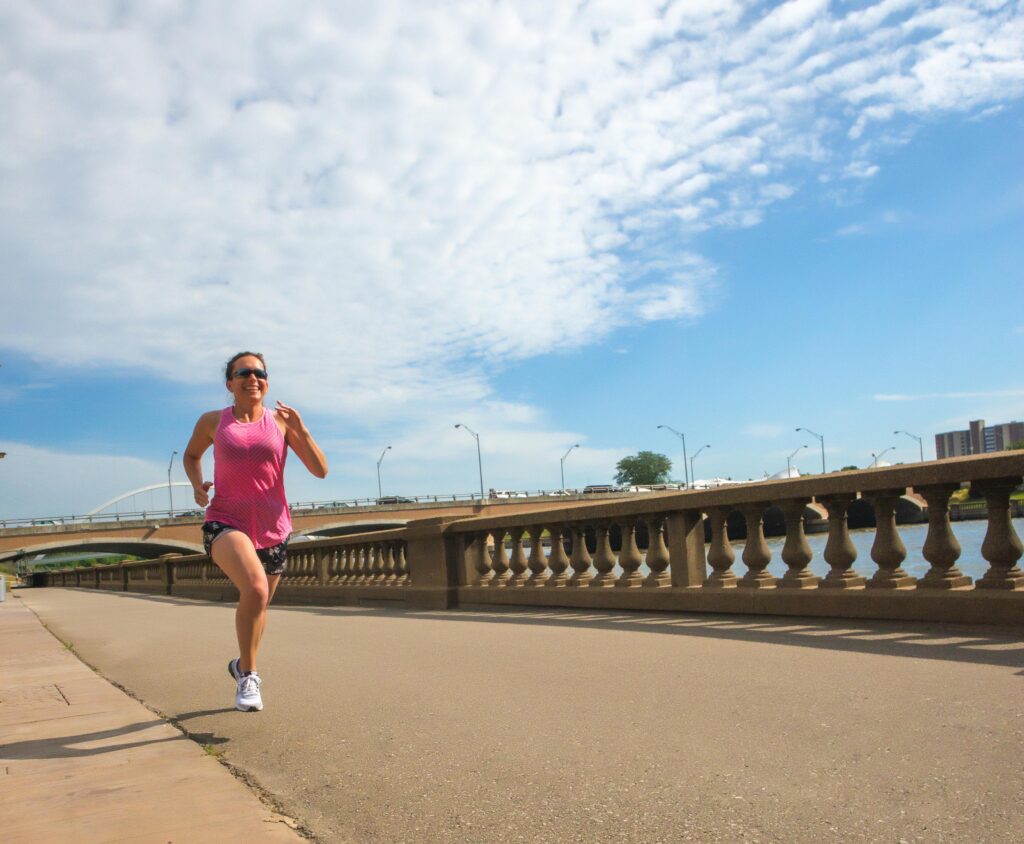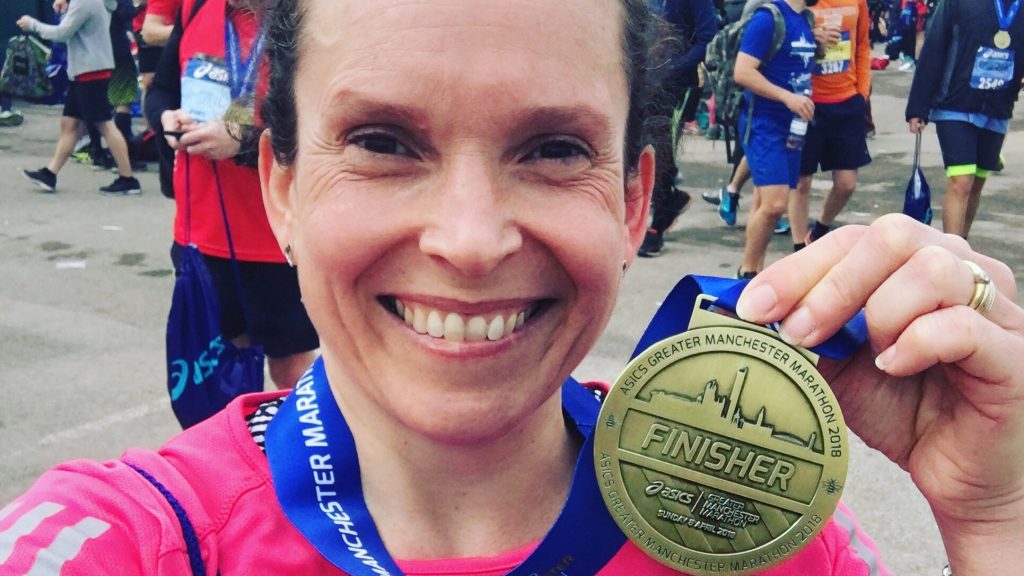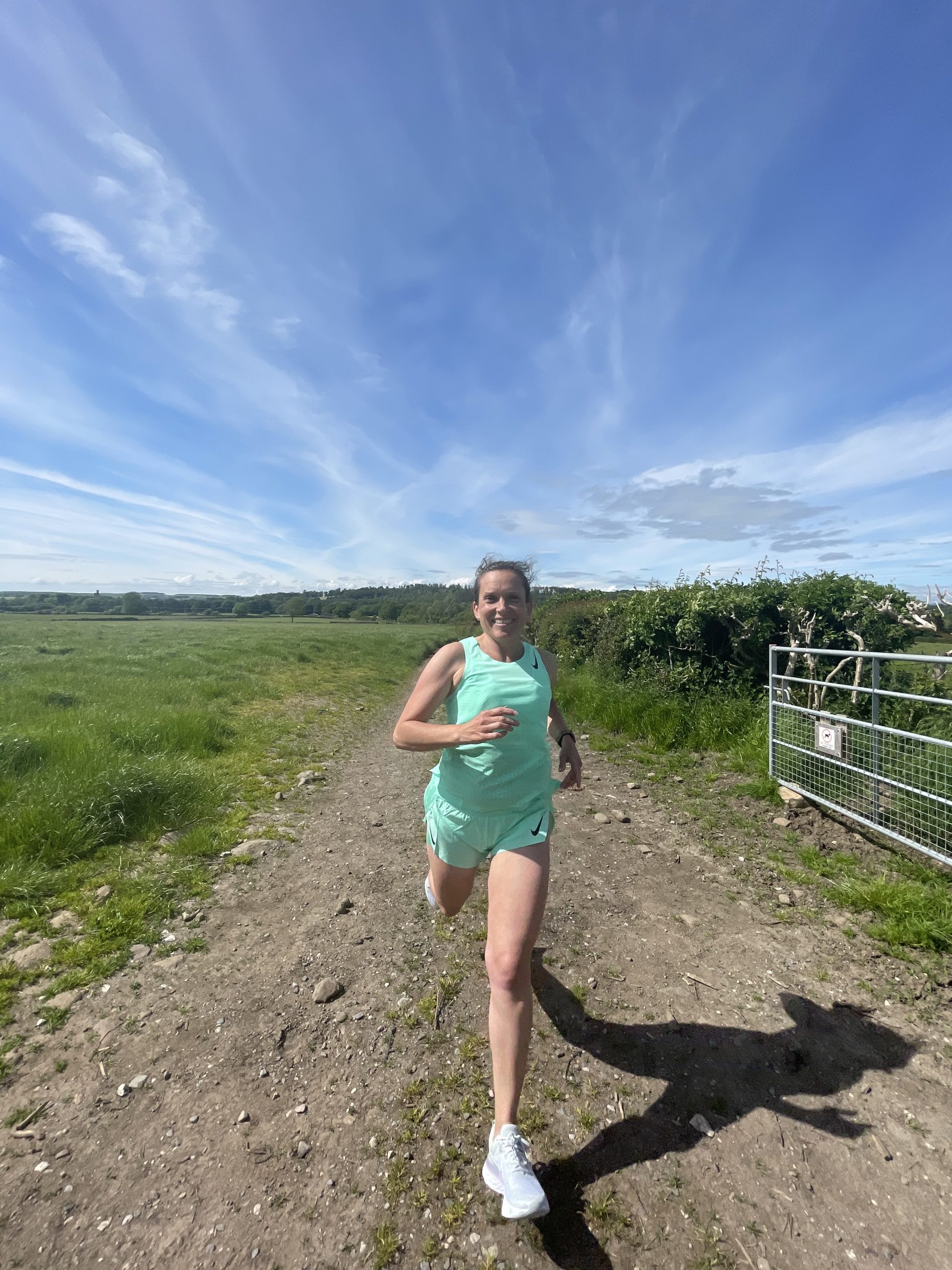Do you want to run faster? There are endless training programmes for improving your race times. But what if you just want to run a little bit more quickly day to day? What if a full plan feels a bit overwhelming and not up your street? What can you try on your run today that will make a difference? How to run faster is a very common runner’s question. I want to focus on both the things you need to do to improve your running speed but also actually HOW you do it in terms of technique too.
I’m the first person to say that speed doesn’t matter, as long as you’re moving forwards and benefitting from your running, that’s all that’s important. But the thing about running is that it makes you want to improve. Helping us to set and reach challenges is one of the incredible ways that running works its magic on us. When I first started running I had two speeds, running or not running. This is completely normal in a runner’s journey but there will probably come a time when you just want to run a bit faster. When you want the satisfaction of seeing that you’ve run your usual ‘round the block’ route more quickly than you’ve ever done it. When you realise you’ve knocked a whole minute off your parkrun personal best. It’s human nature to want to succeed and progress and to feel pride when you do.
Top Technique Tips to Run a Bit Faster
You’d be surprised how many people struggle to actually run a bit faster. It’s not just a case of catching your breath, it’s actually knowing what to do. Here are some technique tips to help you:
- Increase your cadence. Cadence is how quickly your legs are turning over. Rather than trying to stride out to go faster, try shortening your stride and simply moving your legs more quickly. A shorter stride helps you to land right over your knees and feet. If you’re landing with your foot way out in front, it can act as a brake, slowing you down and requiring a lot more energy to move forwards.
- Move your arms more quickly. Next time you’re running along, simply try moving your arms faster and see what happens. You’ll find your legs move more quickly too. It’s weird! Rather than focusing on your legs, focus on your arms and your legs will follow suit. Keep your arms close to your side, pump them backwards and forwards as you run. Keep your fingers straight so you are aerodynamic.
- Activate your glutes. The glutes are the biggest muscle in the body and so many of us run without maximising the power we can get from them. I find it helps to think about the muscle as my leg goes backwards and actually say, ‘Squeeze your bum, squeeze your bum’ with every step. Push the ground away from you to propel you forwards.
- Lean forwards from your ankles. Rather than leaning from your waist, make the lean come from your ankles. Focus on moving forwards rather than up and down. Keep your eye line level and use the energy from your feet to propel you forwards.
- Relax. If you can run efficiently you will have more energy for speed. Don’t waste energy being tense. Relax your shoulders, relax your hands. Make sure your arms are moving forwards and backwards and not crossing your body, that’s just wasting energy in a sideways direction!

Top Training Tips to Run a Bit Faster
So now you know what to do when you’re running, how do you include it into your weekly runs. Here’s my advice on how to train to run faster:
• Train speed once a week. Don’t try to introduce speed work into every run you do. You need variety in your training. Chose one run a week as your speed run. It will be a short session because your energy will go into your pace and not your distance. Make sure you keep one longer, slow run to work on your endurance. Don’t be tempted to try to run this faster each time, keep it intentionally slow and steady.
• Warm up well. If you’re going to push yourself with a bit of speed you really need your muscles to be warm. Minimise your risk of pulling a muscle with a really good warm up. I suggest doing your speed work towards the middle or end of your run. That way you can be sure that your muscles are warm. A brisk walk, some dynamic stretches and then a good ten to fifteen minutes of your usual pace running should do the trick.
• Add short intervals. It’s hard to maintain a faster pace for longer than a few minutes so don’t try. Start with very short intervals where you increase your speed. The idea is to introduce lots of short, faster bits. Over time those bits will all join up and your natural, cruising speed will be faster. You can use a watch to time an interval, start with around 20 to 30 seconds of increased speed. Alternatively, you can simply count your strides. Start wherever you feel comfortable, 10 or 20 fast strides for example. You could even go back to the Couch to 5k app and swap the ‘walk bits’ for slow running and the ‘run bits’ for faster running.
• Try Fartlek. This is the Swedish word for ‘speed play’ and it’s a really flexible way to do a speed session. I love it. You simply pick a landmark up ahead and run faster to it. You can set different distances according to how you feel, some shorter, some longer. You can red more about fartlek training in this Runner’s World article.
• Use a scale. One thing which has really helped me is to use a scale to measure my intensity of running. Rather than just having two speeds (running or not running) or three speeds (not running, running slowly, running fast) I began to realise that I did have a range. My chatty running pace is 5 out of 10. My comfortable, solo, longer distance running pace is 6 out of 10. My absolute max that I can sustain for 100m is 10 out of 10. You can use the scale to help you plan your intervals or combine them with fartlek so you say, ‘I’m going to run to that gate at 8/10 intensity’.
• Rest between intervals. Build in recovery times between your speed intervals. It’s up to you how you do this but try to keep moving rather than collapsing onto the ground or standing still. Walking, slow running or returning to your comfortable pace are all fine. Be guided by the length and intensity of the interval you’ve just done. This isn’t cheating, it’s all part of the plan!
• Include hills. Choosing a route with hills, at least once a week is a perfect way to build your strength, speed and endurance. You can do specific hill repeat sessions where you run up and down one hill with recovery time in between ascents or you can run an undulating route with a few hills included. I live in a very hilly area and am always training on the hills, there’s no doubt that when I go and run a flat route I find it easier and I can therefore increase my speed.
• Build muscles. Speed is all about power. Power comes from muscles. Taking time to build muscle and activate lazy muscles will both help to increase your speed. Add in a strength session each week which includes lower and upper body (you need strong arms to pump) and do opportunistic squats, lunges and bridges to fire up those glutes.
• Run with a buddy. A great way to increase your speed is to run with someone faster than you. It might feel intimidating but with the right person, who doesn’t mind slowing down when you need to, it can make a huge difference. You get pulled along without you even noticing. Joining a running club is something that lots of runners say made a huge difference to their speed.
• Be brave. It takes a bit of nerve to run faster. There’s the uncomfortableness of feeling out of breath. You just have to accept that’s inevitable and a sign that you’re working hard, don’t be afraid of it. Then there’s the fear of tripping and falling. Make sure your shoes are good and laces are secure. Put layers to one side or make sure they’re very securely tied around your waist so they don’t fall down and trip you up (I’ve seen it happen). Choose even surfaces on a dry day and look for trip hazards. When you first start you’ll feel nervous but be brave and build up gradually. It’s liberating to run faster. It makes you feel like a child again. You’ll feel strong and powerful.
• Be consistent and patient. Getting faster doesn’t happen overnight. It takes time. Set it as a mid-term goal with around 12 weeks for a noticeable improvement. Track your progress to help you stay motivated but don’t worry if there are ups and downs in your stats. Consistency is vital. If you can run regularly, do speed work, hills and strength training once a week I guarantee you will get a bit faster.

Featured image: Thomas McGrattan.
Running by river image: Horst von Bohlen
Medal image: drjulietmcgrattan.com








I love this! I would definitely like to run a bit faster. I do some of these things when I’m training for a race, but then go back to ‘just running’ afterwards. I’ll have to keep going and see if I can work on my speed a bit more.
With your amazing consistency and hard work I know you can do it!
Great tips. I’d add a long run to the mix as well since endurance is important for a faster pace.
Thank you so much
Thanks David – appreciate your input